info@graf.cat
October 2021
Ruta de autor 2/5
by Mario Santamaria
Barcelona Internet Tour
Internet Tour is a tour operator focusing on the Internet phenomenon. It organises coach tours through the material infrastructure of the Internet, a journey lasting approximately three hours with a few stops. Inside the coach-browser, a guide talks about the images that appear on the other side of the windows. Through a fragmented text, stories are told about the entanglement of telecommunications with other infrastructures and temporalities of the city, such as the distribution of goods, transport, topography or finance. The route presented below is an adaptation of the visit made in Barcelona in 2018 as part of the programme of The Influencers festival at the CCCB.
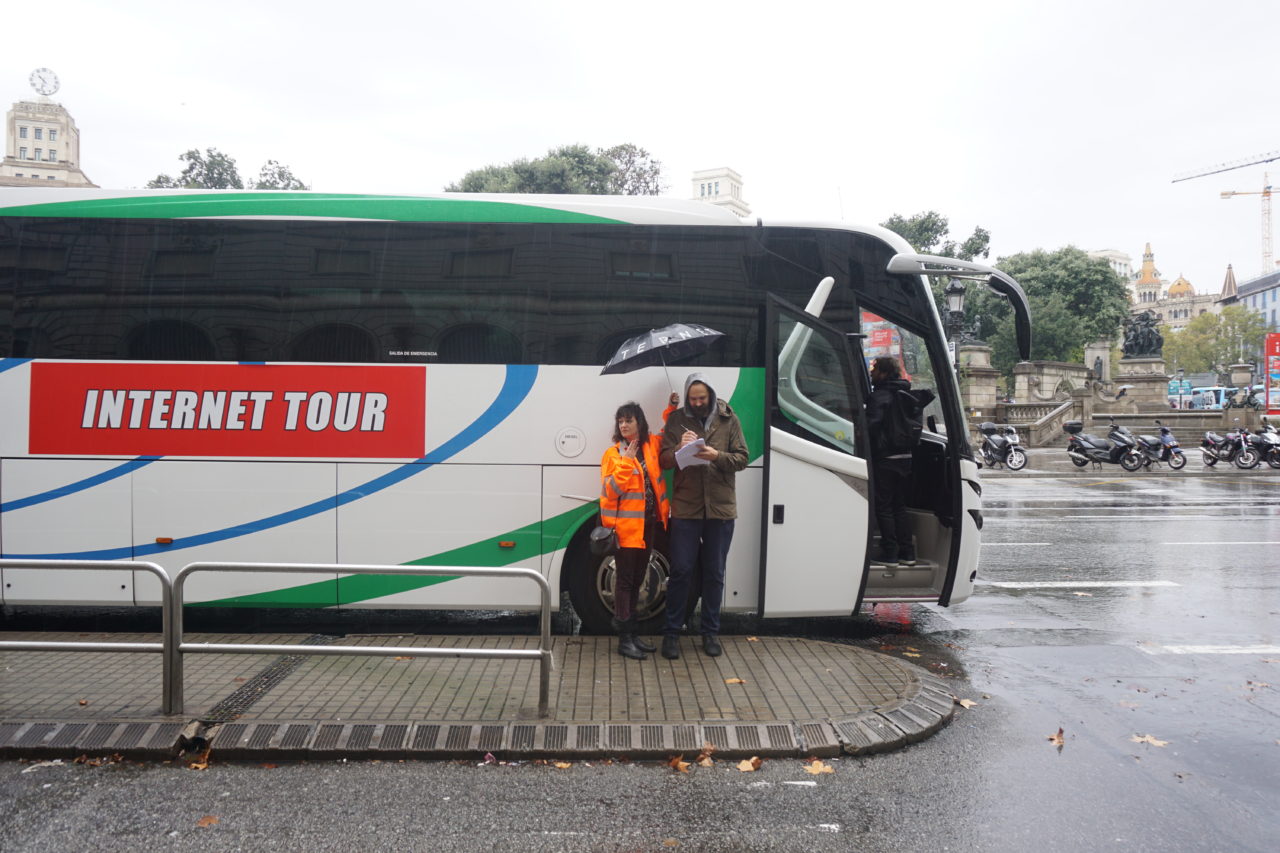
Welcome to the Internet Tour, Barcelona’s first tour operator focused on the Internet phenomenon. During this tour we will be able to see some of the emblematic places that create the physical infrastructure of the network. We wish you a good trip and enjoy the sights.
1. Sant Adrià de Besòs beach
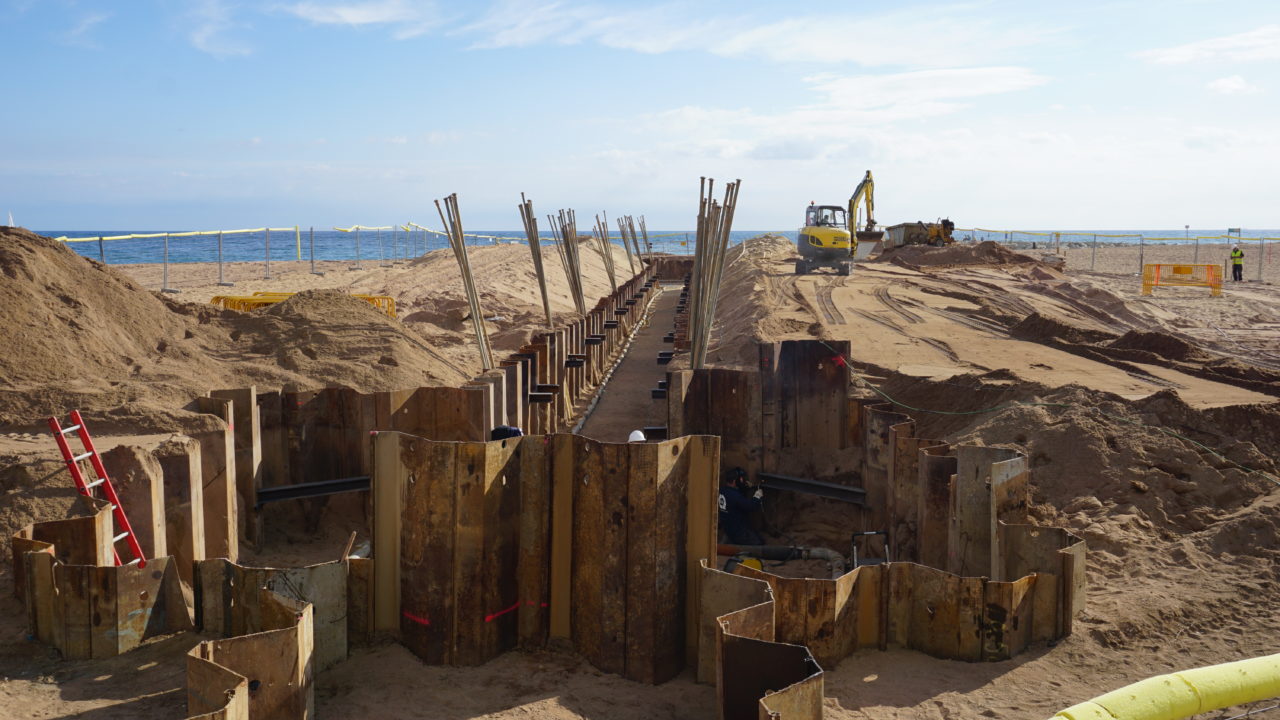
To its left is the beach of Sant Adrià de Besòs, closed to bathing at the end of May 2021 after the detection of carcinogenic elements exceeding tolerable levels. Samples taken from the beach indicate an excessively high presence of lead, copper, arsenic, nickel, zinc, vanadium and benzopyrene. These metals come from the industrial past of the area and the mouth of the Besós river, metals that were brought to the surface during the installation of connections for a new submarine fibre optic cable: a 37,000 kilometre cable called 2Africa, which will connect England to Barcelona by circling the entire African continent.
2. Sant Pere Màrtir
We are at an altitude of 399 metres, near an anti-aircraft battery from the Civil War. Under this enormous antenna are buried the remains of an old tower of the optical telegraphy network that crossed Catalonia in the mid-19th century. The optical telegraph consists of an apparatus placed at visual distance from another similar apparatus. The operator handles controls that place the telegraph elements in a position recognisable by the next tower. The latter repeats the message, which is read and reproduced by a third, and so on.
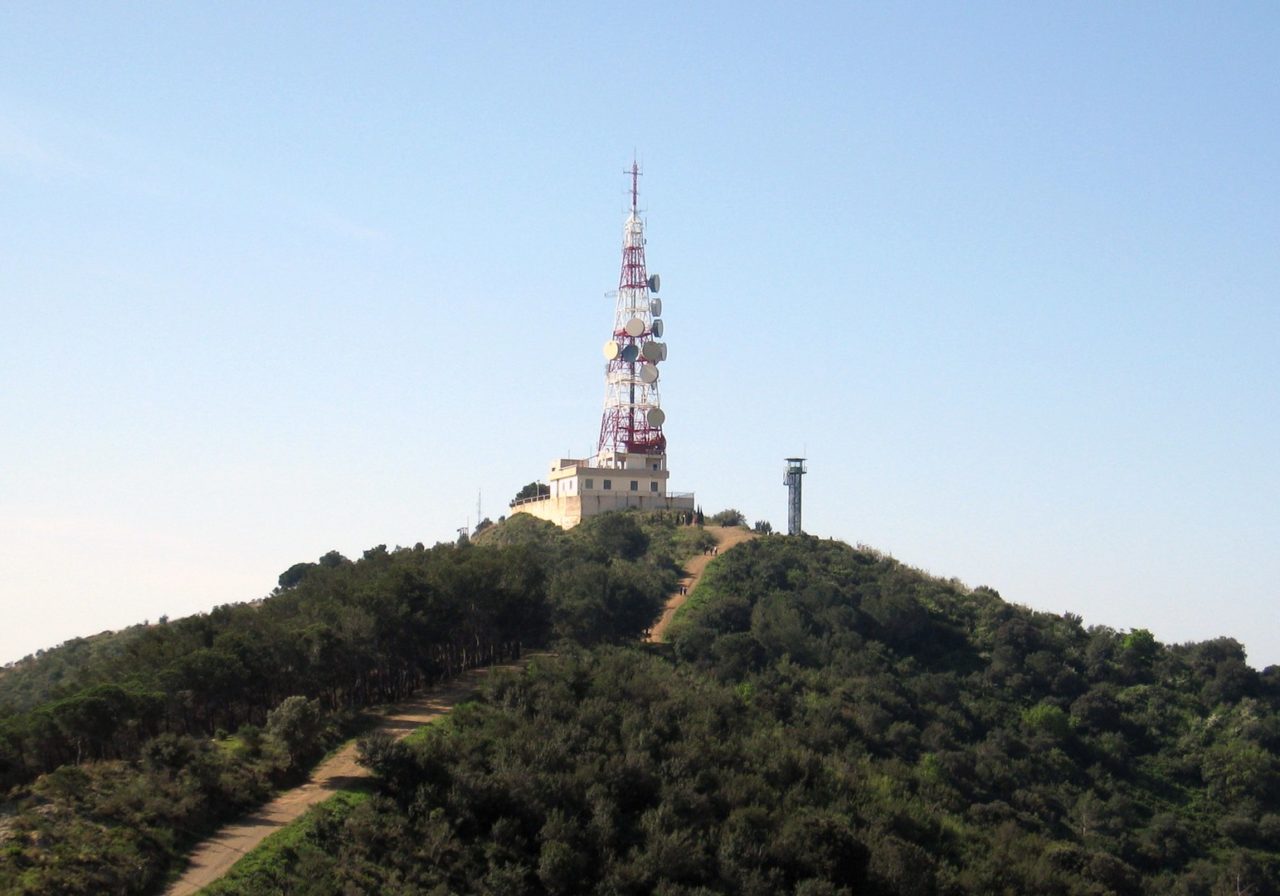
Foto: Till F. Teenck.
From here, visual contact was maintained with the tower of the castle of Monjüic, the tower of Sant Pere de Romaní in Molins de Rei and the tower of Ordal. The electric telegraph, by cable, was already known at that time. However, it was much easier to sabotage. This network of towers was promoted during the Matiners’ War (1846-1849) with the aim of speeding up communications with the areas near the Pyrenees, where the Carlist guerrillas were active.

Historia de la telegrafía óptica en España (History of optical telegraphy in Spain), Sebastián Olivé Roig, 1990.
3. CATNIX
At number 6, Del acero (Of steel) street, parallel to Del hierro (Of iron) street and perpendicular to Del plomo (Of lead) street, the neutral point of Catalonia is located: CATNIX. This building is the physical place where the different operators associate to connect their networks and exchange Internet traffic through direct connection agreements. The neutral nodes are strategic places in the network, since a very high percentage of Internet traffic circulates through them. The location of a neutral point conditions the deployment of backbone infrastructures and also makes it possible to access and/or block the information passing through them. Among the metallic streets around them, there are many companies dedicated to Internet services and data storage, such as Bitnap or Colt Telecom.
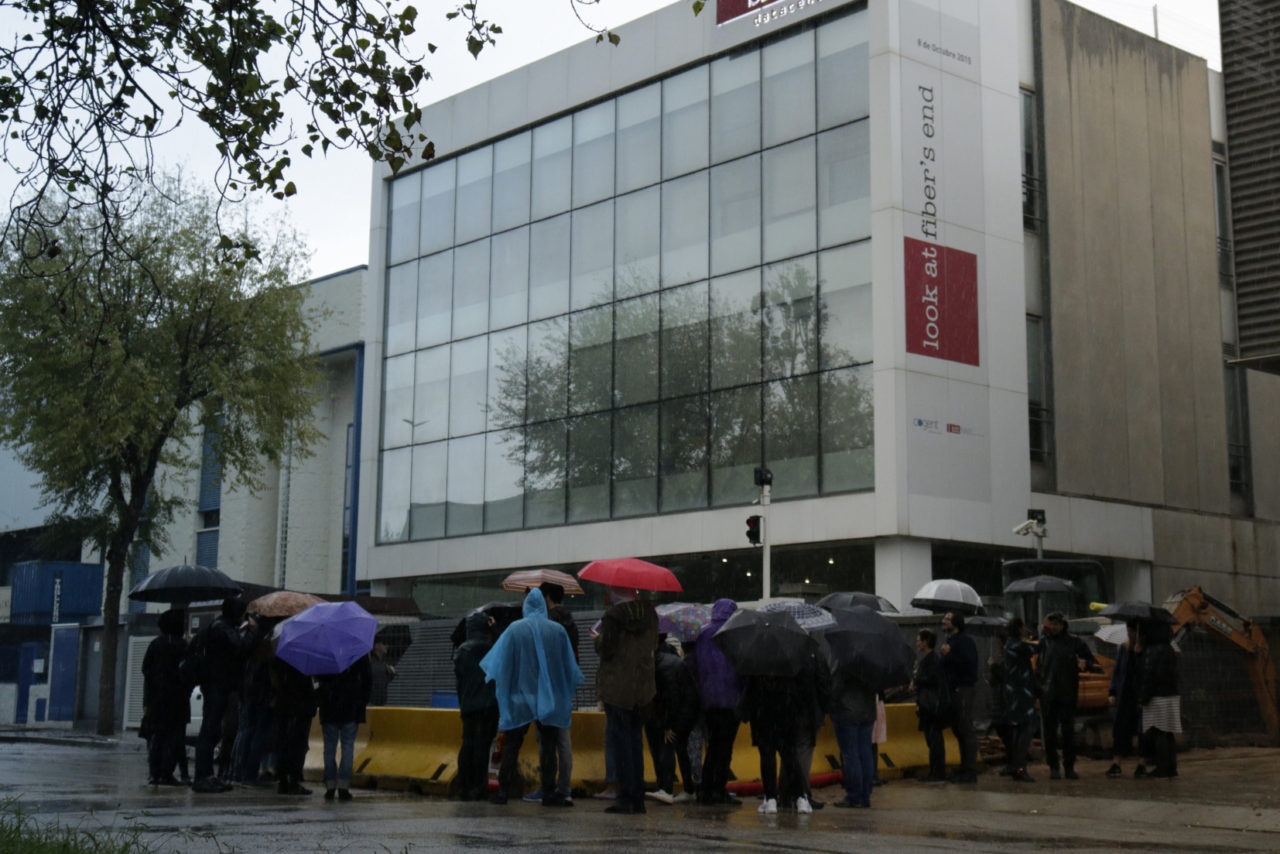
Barcelona Internet Tour. Foto: Carlos Monroy.
4. Amazon
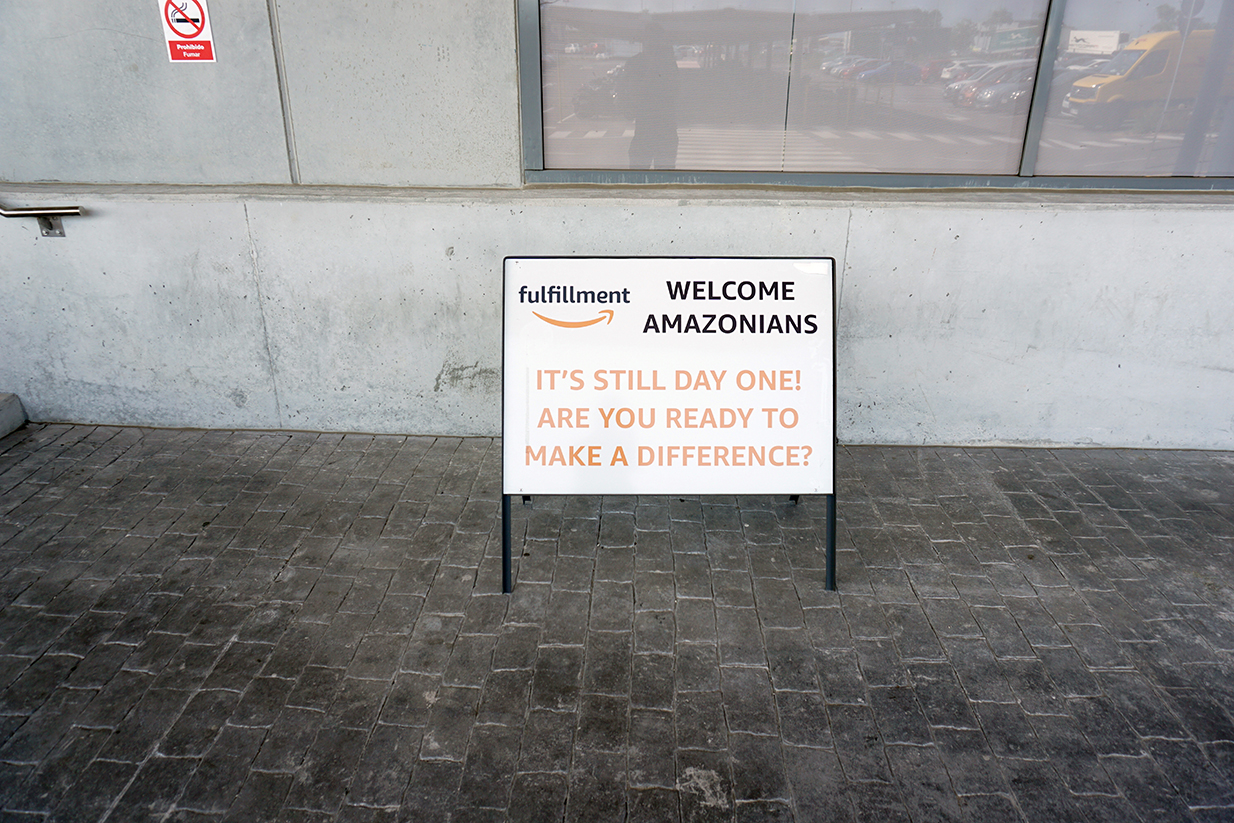
We drive in circles with the coach through the huge car park of Amazon’s logistics centre in El Prat de Llobregat. From here, vehicles full of smiling boxes are constantly leaving, entering the C-31 or C-32 roads to make the last mile to their destination. Kilometres of fibre optics are deployed along the platforms of these roads, through which many of the data we load or upload from our devices travel daily. Smile-packets and data-packets circulate along the same routes; the optical fibre is embedded in previous infrastructures, such as sewers, gas pipes, railways and roads. Amazon, the multinational e-commerce company, makes 70% of its revenue from selling data storage and processing. Its servers house, for example, the digital archive of the Library of Catalonia.
8 Octubre de 2015
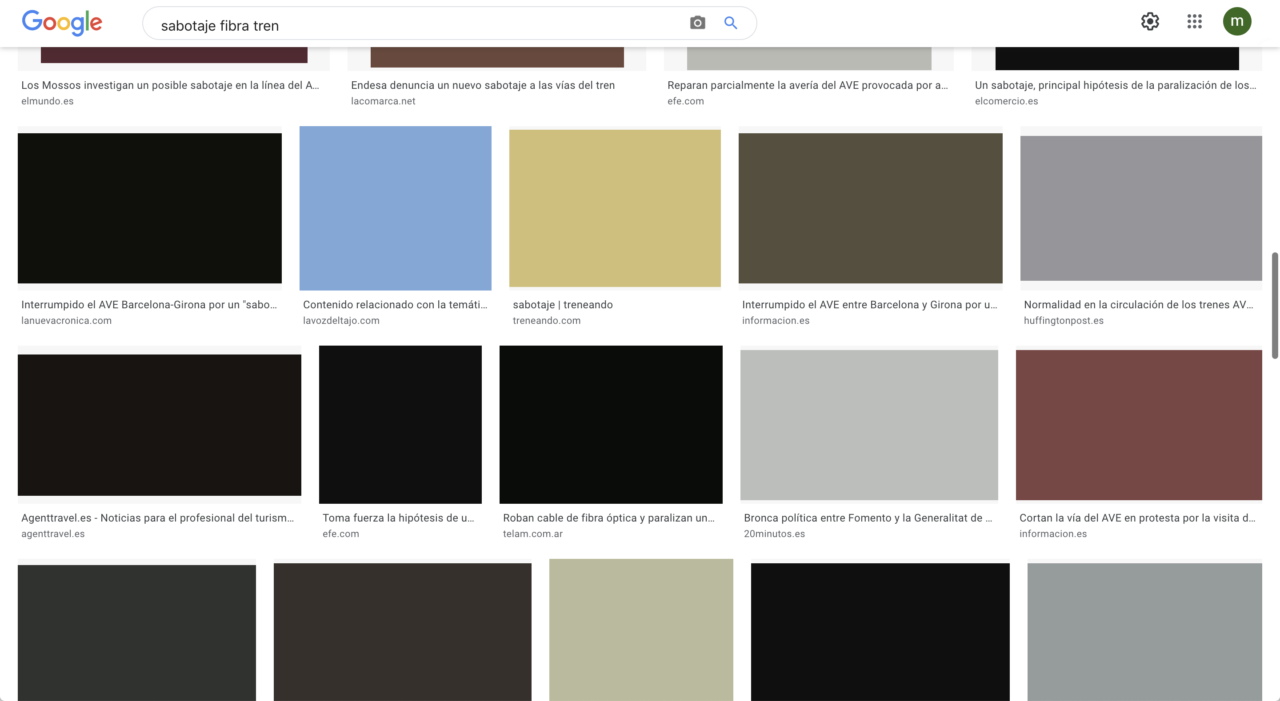
The movement of all AVE and Alvia trains in Catalonia was paralysed for three hours, in the middle of rush hour, due to a cut in fibre optic cable between the stations of Vilafranca del Penedès and Gelida (Barcelona), at kilometre 570 of the track. It is not yet clear whether the cut was due to attempted copper theft or sabotage.
The police believe it to be sabotage; investigators have reached this conclusion after finding that there are two cuts in the fibre optic at the same height in both directions of the track. The cuts affected the main and back-up communications line, the latter related to emergencies. Without fibre optics, trains are stopped. Trains were unable to run between the stations of Camp de Tarragona and Figueres Vilafant (Girona) between 6.58 a.m. and 10.15 a.m.
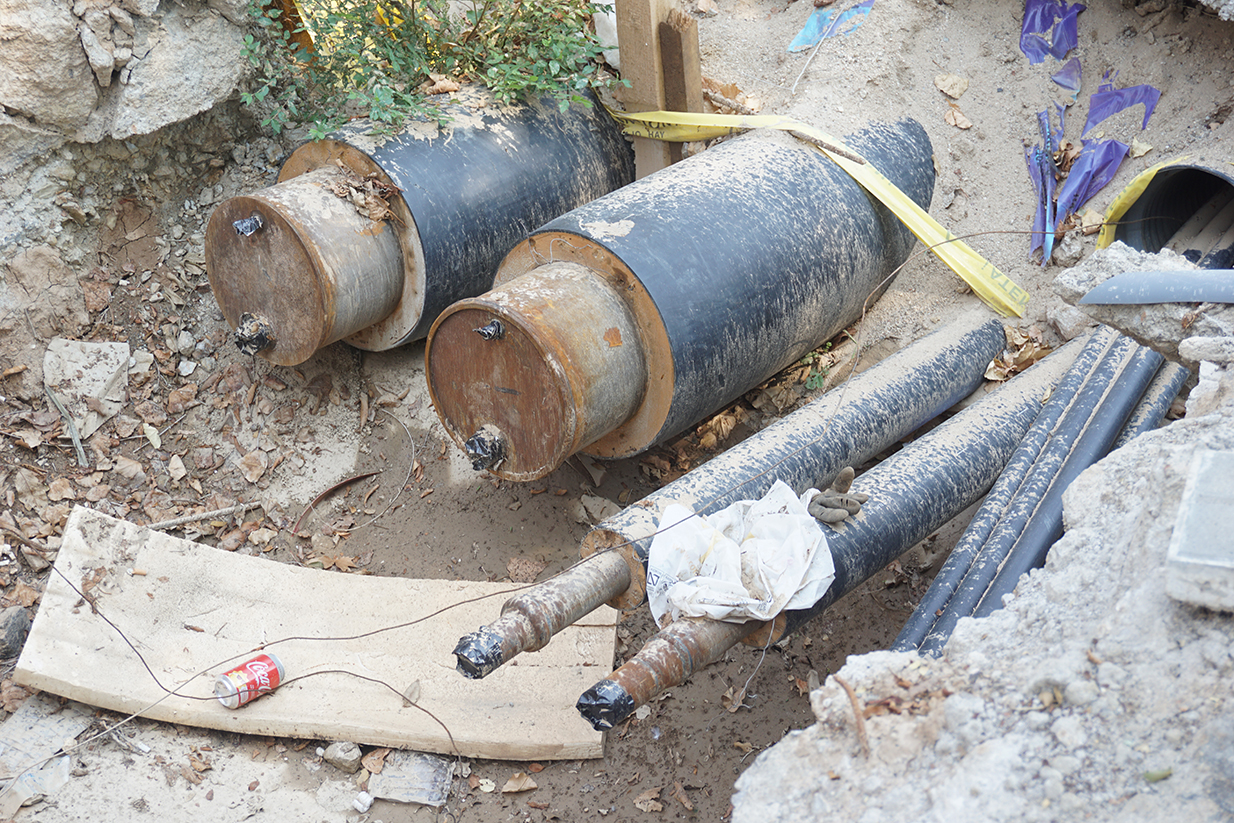
5. Gavà beach
Under the sand, somewhere on this beach, a 309-kilometre cable stretches over the horizon to the island of Mallorca. The Penbal-5 cable was installed in 1995, is owned by the company Telxius (a subsidiary of Telefónica) and consists of 6 pairs of optical fibre and tens of thousands of telephone circuits.

Much of today’s Internet infrastructure was built on the coasts to serve major population centres. As new connections were established, companies built the infrastructure along roads and railways.
Where it is not underground, much of the Internet is underwater. A physical network of undersea cables transports huge amounts of data between continents in milliseconds. These cables are protected from the sea by tough steel casings and rubber sheathing. However, they connect to the terrestrial network, which was not designed with water in mind. If the plastic pipes carrying cables underground were to flood, it could corrode the electronics and disrupt the fibre-optic signals. Based on the assumption that global greenhouse gas emission trends continue in their current relationship with human population and economic activity, global average sea levels are expected to rise by 30 centimetres by 2030. Within fifteen years, much of the Internet infrastructure in Catalonia will be unusable under the sea.
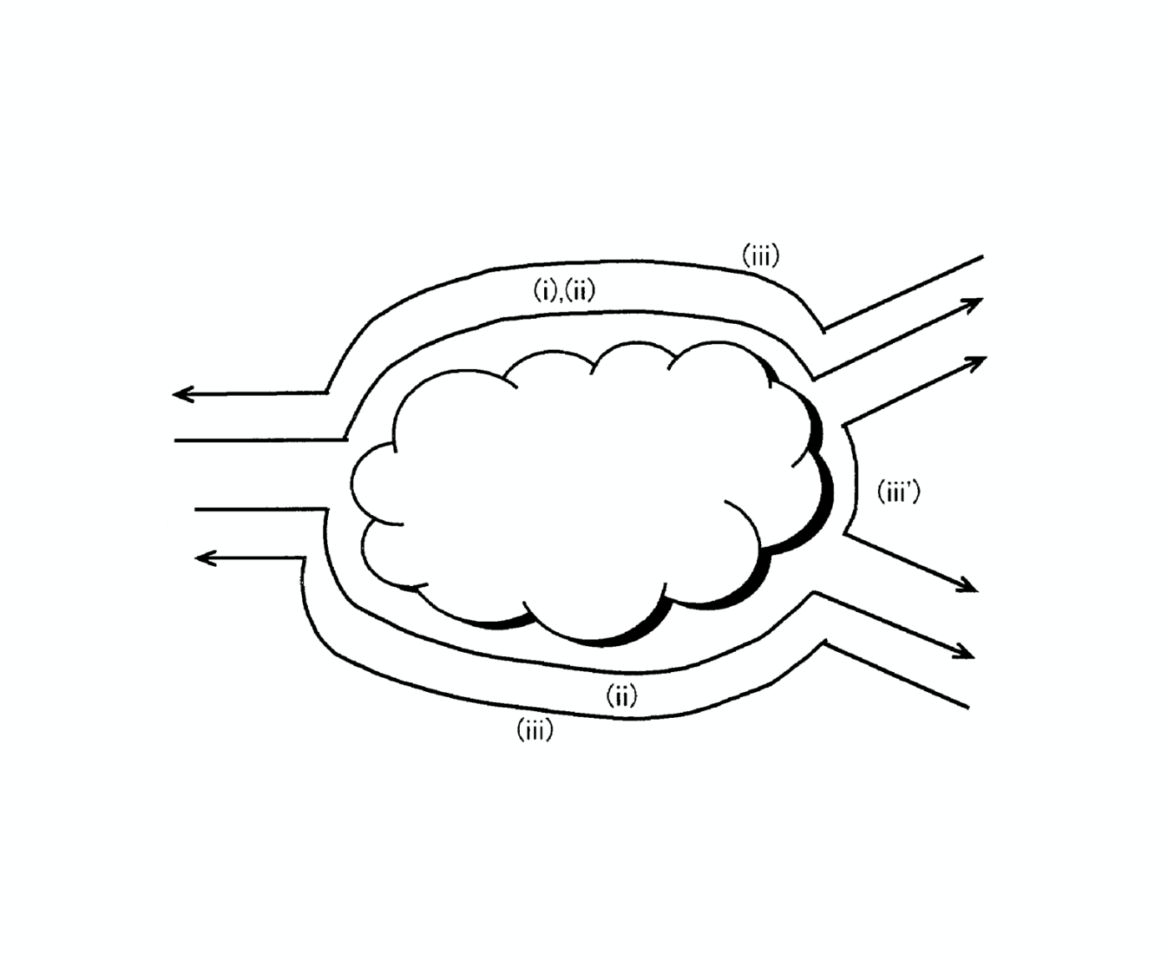
–
Graf Route with Ruta de autor. Text by Mario Santamaria, artist.
This route is part of a series of five a series of five in which four other artists participate and that will be published in the coming months. Ruta de autor has selected four works that address the peripheries of Barcelona: Internet infrastructures (Mario Santamaría), the colonial garden (Agustín Ortiz Herrera), artistic gentrification (Zaida Trallero) and the homeless present (Leonor Urdaneta). We invite you to read, walk and stay tuned.






